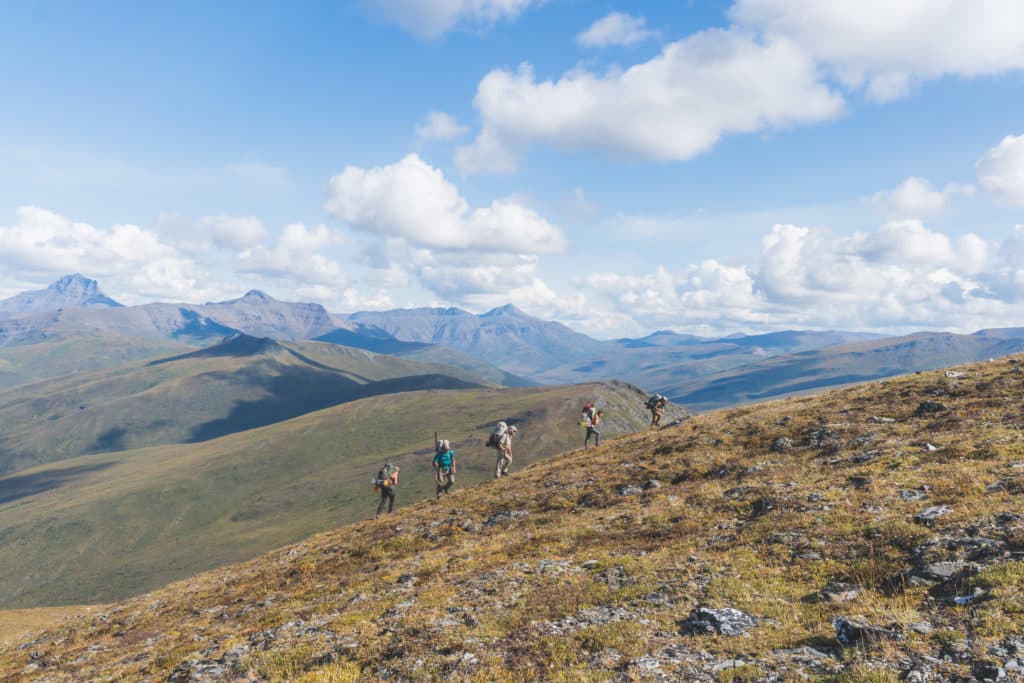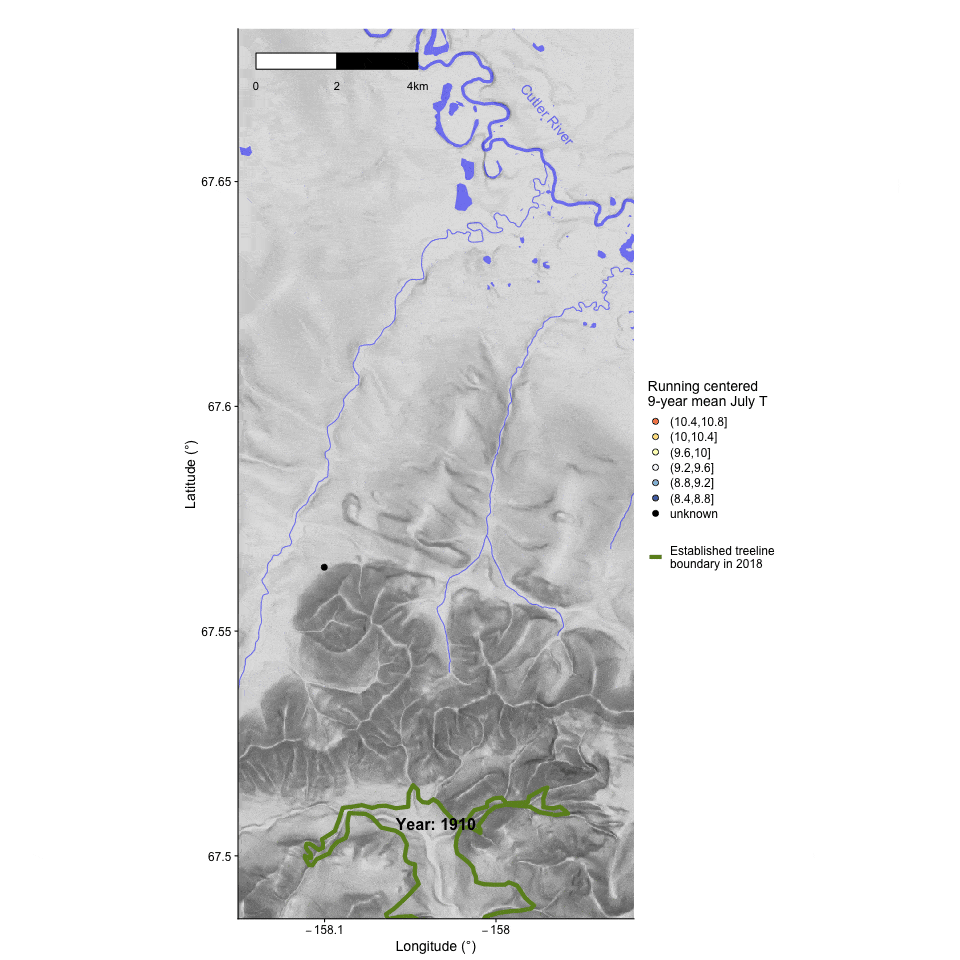
Photo by Toshio Matsuoka
For the past several years, Dr. Roman Dial has researched tree line in northern Alaska. His undergraduate students may spend 99 days straight in the backcountry, gathering data by foot and by packraft from Canada to Kotzebue. That hands-on research has now produced an open-access publication in Nature, one of the world’s most renowned, most highly cited, and most widely read scientific publications.
Dial is first author on the publication, which aims to explain the rapid advance of the tree line into northern tundra. The study specifically looked at white spruce and determined that Alaska’s tree line isn’t creeping incrementally, but advancing exponentially, and doing so by “jumping” ahead as pockets of young trees, rather than moving like a wave of trees. White spruce are pushing north at an incredible four kilometers each decade, with the help of shifting climate conditions.
The Nature study stemmed from a discovery Dial made while reviewing satellite imagery from 2018, one of the snowiest winters on record in northwest Alaska. He found an anomalous patch of shadows on the otherwise white, snow-covered tundra. Those shadows likely indicated the presence of tall vegetation, but that would mean trees had hopped over the peaks of the Brooks Range. “Based on climate models, we weren’t expecting that to happen for at least a hundred years,” he said.
Within a week of seeing the satellite imagery he took a small plane and one of his regular outdoor adventure partners to investigate. They landed as close as possible, then walked five days to reach the location. There, the pair found thousands of white spruce trees in a basin where the species hadn’t grown for 30,000 years according to a previous study.
Over subsequent research trips accompanied by APU students and alumni, Dial and his collaborators checked everything from tree rings to spruce needle nutrients to understand what allowed white spruce to flourish. They found trees in the new population were growing faster than those at established tree lines. That’s likely a result of excellent soils, which get more productive as the climate warms. Climate change also helps the trees move north; stronger storms fuel faster winds, which can carry white spruce seeds further from the current range.

A spatially explicit simulation from the western portion of the research site from 1910 to 1980. Study area temperatures were found by applying lapse rate to Kotzebue July air temperature record.
The study unpacks the various conditions fostering white spruce expansion. It also shows how the tundra could become a boreal forest much faster than expected. That change will have wide implications. For just one example, dark trees on white tundra will absorb more solar radiation, which will accelerate snowmelt across the north and further warm soils.
“This research shows how fast things are changing in the Arctic, and how conditions in Alaska alter the global climate and carbon budget,” Dial explained.
At a more local level, the study also shows the experience of an APU education. “We couldn’t have done this without APU students,” Dial said. “Collecting data across 2,500 kilometers of tree line requires a lot of time on the tundra. Our students get an incredible summer in the Brooks Range, while the rest of us get a clearer picture of our changing climate.”
Click here to read the open-access research published in Nature.
Click here for a story in Smithsonian Magazine about Dial’s research expeditions in the Brooks Range.
Click here to read about Dial’s students presenting their research at the Explorers Club in New York City.
